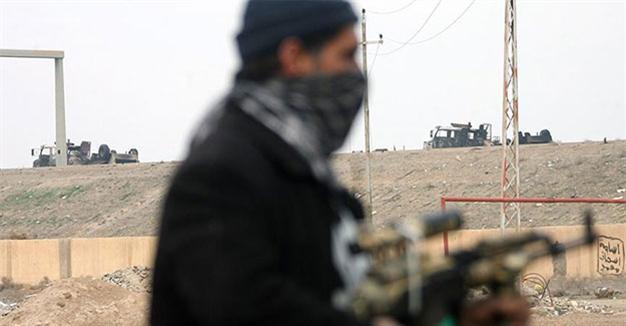Turkey, US-led forces hit more ISIL targets
ANKARA

AA photo
Turkey and U.S.-led coalition forces have intensified their joint military campaign against the Islamic State of Iraq and the Levant (ISIL) in Syria and Iraq.Some 13 Turkish “Fırtına” (Storm) howitzers shelled six ISIL targets on Sept. 13 in the Wuguf area of northern Syria as part of the Euphrates Shied Operation, the Turkish Armed Forces (TSK) said in a statement on Sept. 14.
With the latest shelling, the total number of shellings since the beginning of the operation rose to 2,245 against 524 targets.
The operation, which was launched in cooperation with the U.S.-led coalition on Aug. 24, saw the Turkish military back the Free Syrian Army (FSA) with artillery, tanks, air power and Special Forces in a bid to sweep ISIL and other terrorist elements from its borders after a series of attacks targeting the country. Aircrafts from the anti-ISIL coalition also backed the operation.
On the same day, U.S.-led coalition forces pounded ISIL targets between al-Rai and Azaz in five airstrikes killing six militants.
The TSK statement said there had been five coalition strikes on ISIL targets in the Yahmul, Kafr Ghan, Güzel Mezra and Jakka areas east of Azaz and six ISIL militants were killed, in addition to the destruction of four mortar positions and two defensive positions. The statement added that Turkish jets did not carry out the strikes but were waiting on the ground for any instant targets that might emerge.
Meanwhile, U.S. warplanes eliminated a “significant chemical threat” to Iraqi civilians by bombing a complex of buildings near the northern city of Mosul that ISIL militants had converted from pharmaceutical manufacturing to chemical weapons production, the three-star general in charge of U.S. air operations in the Middle East, Air Force Lt. Gen. Jeffrey Harrigian, said on Sept. 13, the Associated Press reported.
Harrigian told reporters at the Pentagon that the target was an ISIL headquarters also used to produce lethal chemicals, possibly including chlorine and mustard gas. He provided no details on the chemical production.
He described the airstrike as a large, well-planned operation, which destroyed more than 50 targets at the site with a variety of U.S. warplanes, including Air Force B-52 bombers and Marine Corps F-18D attack planes. Other U.S. officials said later that a total of 12 U.S. planes were used.
Harrigian said the mission was part of a broader effort to cut off ISIL’s main sources of revenue, kill their leaders and create “organizational dysfunction” in ways that will eliminate the group as a military threat in Iraq and Syria.
The Pentagon said Sept. 13 that it launched various strikes on ISIL forces in Syria over the past several days, including hits on some targets that “may have resulted in civilian casualties,” AFP reported.
The incidents took place Sept. 7, Sept. 10 and Sept. 12, according to a statement from CENTCOM.
It did not give a number of dead or injured.
But in the Sept. 10 raid “near Raqqa, Syria, a strike against an ISIL target may have resulted in the death of civilians near where the strike occurred,” CENTCOM said.
















